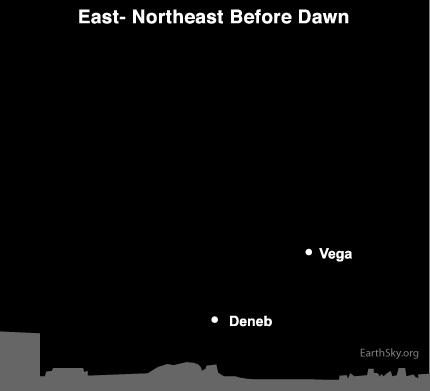Courtesy of EarthSky
A Clear Voice for Science
Visit EarthSky at
www.EarthSky.org [1]
 [2]
[2] [3]An Australia visitor wrote, I seek to find out what speed our sun is traveling at and also how many years does it take to circumnavigate the galaxy?
[3]An Australia visitor wrote, I seek to find out what speed our sun is traveling at and also how many years does it take to circumnavigate the galaxy?
Our Milky Way galaxy is a collection of several hundred billion stars. It has an estimated diameter of 100,000 light-years. Our sun does indeed circumnavigate the Milky Way galaxy. In space, everything moves. There are various estimates for the speed the sun travels through the galaxy [4], but its speed is about 140 miles per second.
Likewise, there are many estimates for the length of time it takes the sun to complete one circuit of the galaxy [5], but a typical estimate is about 230 million years.
That period of time, by the way, is known as a cosmic year. It so happens that astronomers know which star the sun is moving toward, in its journey around the galaxy. In January, this star appears in the west-northwest at dusk and nightfall. It also appears in the east-northeast at and before dawn in January. It is one of the loveliest stars you will ever see, Vega [6] in the constellation Lyra the Harp.
Our sun’s direction of motion (and thus our Earth’s corresponding motion) toward Vega has a special name. It has called the apex of the sun’s way. Vega – the solar apex star – can be found in the eastern sky during the dawn and predawn hours throughout January.
![]() [7]Written by EarthSky [8]
[7]Written by EarthSky [8]
Astronomy Picture of the Day from NASA/JPL [9]
EarthSky: Space [10]
CHANDRA Photo Album [11]
U.S. Naval Observator Astronomical Information cente [12]r
Universe Today [13]
StarDate Online [14]
Sky and Telescope [15]
National Geographic [16]
Space Com [17]
Simostronomy Blog [18]
Amazing Space [19]
The York County Astronomical Society [20]
Scope City [21]